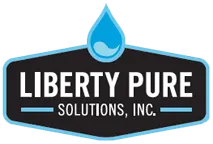Understanding PFAs
Introduction:
Water is a fundamental resource necessary for sustaining life and maintaining our overall well-being. However, in recent years, the presence of a group of chemicals known as per- and polyfluoroalkyl substances (PFAS) in water sources has raised significant concerns. This article aims to shed light on PFAS contaminated water, its associated risks, available remedies, and the shared responsibility in addressing this issue.
What are PFAS?
Per- and polyfluoroalkyl substances (PFAS) are synthetic chemicals that have been widely used in various industries due to their unique properties, including resistance to heat, water, and oil. They have been utilized in products such as non-stick cookware, waterproof fabrics, food packaging, firefighting foams, and more. The two most commonly studied PFAS compounds are perfluorooctanoic acid (PFOA) and perfluoro octane sulfonate (PFOS).
Sources of Contamination:
PFAS contamination can occur through various pathways, including industrial discharges, landfill leachate, firefighting training areas, and wastewater treatment plants. Additionally, the use of PFAS-containing products can result in their release into the environment, leading to water contamination.
Health Risks:
Exposure to PFAS-contaminated water has been linked to several adverse health effects. Prolonged exposure to high levels of PFAS has been associated with increased risks of certain cancers, liver damage, developmental issues in infants and children, immune system dysfunction, and hormonal disruptions. The long-lasting nature of PFAS compounds in the environment and their potential to accumulate in the human body make addressing this issue crucial.
Regulatory Guidelines:
To safeguard public health, regulatory bodies and government agencies have set guidelines and standards for safe PFAS levels in drinking water. The United States Environmental Protection Agency (EPA) has established a non-enforceable health advisory level of 70 parts per trillion (ppt) for PFOA and PFOS combined. However, some researchers and advocates argue that even lower concentrations may pose risks and calls for stricter regulations continue to grow.
Remediation Strategies:
Addressing PFAS contamination in water sources requires a comprehensive approach. Remediation strategies include:
1. Source Control: Implementing strict regulations on PFAS production, usage, and disposal to prevent further contamination of water sources.
2. Water Treatment Technologies: Utilizing advanced treatment technologies such as granular activated carbon (GAC) filtration, ion exchange, and high-pressure membrane processes like reverse osmosis to remove PFAS from contaminated water.
3. Public Awareness and Education: Raising awareness about PFAS contamination, its health risks, and the importance of monitoring and testing water sources regularly. Encouraging individuals to seek information about their local water quality and take appropriate measures to protect their health.
Shared Responsibility:
Addressing the issue of PFAS-contaminated water requires a shared responsibility among various stakeholders. This includes government agencies, industries, water utilities, researchers, advocacy groups, and individuals. Collaboration is crucial to develop stricter regulations, invest in research and development of effective treatment technologies, and ensure transparent communication about water quality to the public.
Conclusion:
The presence of PFAS compounds in water sources poses significant health risks, necessitating immediate action and increased awareness. Governments, industries, and individuals must work together to prevent further contamination, develop effective treatment methods, and ensure access to safe drinking water for all. By recognizing our shared responsibility, we can safeguard our water resources and protect the well-being of present and future generations.
